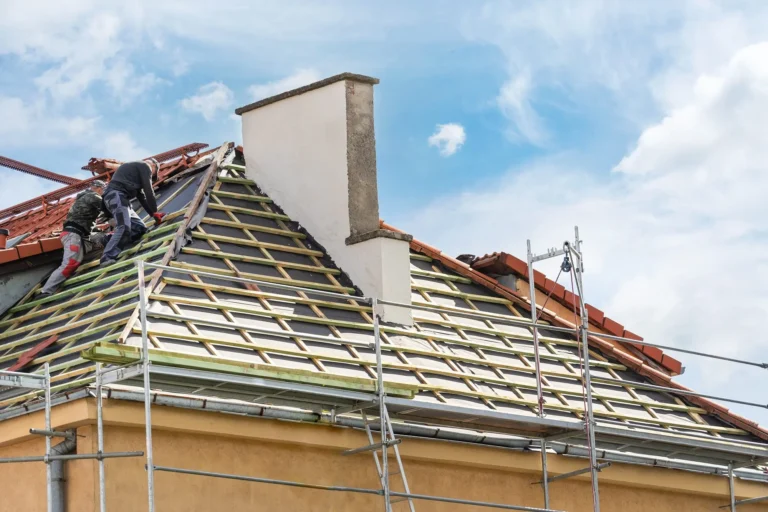Roof installation is a major home improvement project that requires careful planning, skilled work, and good weather. Weather plays a big role—rain, snow, wind, or extreme heat can cause delays. For homeowners in areas with unpredictable conditions, understanding these factors is key to effective planning. Scheduling a roof installation isn’t just about picking a convenient date. Weather can extend the timeline, impact materials, and pose safety risks. By considering how climate affects the process, homeowners can better prepare for a smoother, more successful project.
The Impact of Rain and Moisture
Rain is a major challenge for roofing projects. Roof installations need dry surfaces, as moisture on the deck or underlayment can prevent proper sealing. Wet materials may not adhere correctly, increasing the risk of leaks or structural issues. Spring and fall, with frequent rain, often cause roofing delays. Contractors may pause work to protect materials or wait for surfaces to dry. If rain hits during installation, crews secure the site with temporary coverings. Homeowners planning roofing projects during rainy seasons should expect delays and work with contractors who monitor weather forecasts.
Snow, Ice, and Freezing Temperatures
Cold weather creates challenges for roofing projects. Snow and ice make roofs unsafe and can hinder material application. Some shingles become brittle in the cold, increasing the risk of cracks and raising costs. Freezing nights and snow often cause delays, and adhesives may not cure properly in low temperatures. To ensure success, avoid peak winter, plan ahead, and store materials in suitable conditions.
Wind Delays and Safety Hazards
Strong winds create major challenges during roofing, endangering workers and materials. Gusts can dislodge underlayment, blow away shingles, and make ladders or safety gear unstable. Seasonal winds often delay progress, even on clear days, especially on steep slopes or multi-story homes where conditions are riskier. While frustrating, these pauses are essential for worker safety and proper installation.
Heat and High Temperatures
Excessive heat may not cause delays like rain or snow, but it can still impact roofing quality. High temperatures can make asphalt shingles too soft, increasing the risk of damage during handling. Worker safety is also a concern, as roof surfaces in direct sunlight can become dangerously hot, leading to heat exhaustion or dehydration. To manage this, contractors often start early, work shorter hours, or pause during peak heat. Homeowners planning roofing installation in Tooele should know that summer projects may be completed in stages to protect crews and ensure quality work.
Planning Around Seasonal Patterns
Installing a roof requires careful timing, especially in areas with four seasons. Spring and fall are ideal due to moderate weather, but they’re also in high demand, so plan ahead. Summer offers longer days, but extreme heat can be an issue, while winter brings delays from snow and freezing temperatures. To ensure a smooth project, monitor your local climate and discuss seasonal risks with your contractor. Flexibility is key—prioritize quality and safety over rushing deadlines.
Communication and Flexibility Are Key
Unpredictable weather can disrupt even the best-planned roofing projects. That’s why homeowners should work with professionals who communicate clearly and set realistic expectations. Delays to protect materials or ensure safety are often necessary for a smoother process. A reliable roofing team prioritizes safety and quality over speed, delivering a durable, long-lasting roof you can trust.
Conclusion
Weather can greatly affect the timeline of a roofing project. Rain, snow, wind, and extreme heat may cause delays or require adjustments to ensure safety and quality. That’s why working with experienced professionals who can handle these challenges is essential. A successful roofing installation requires careful planning, flexibility, and attention to seasonal conditions, prioritizing long-term durability over speed. When done right, the result is a strong, reliable roof built to last.
Also Read-Benefits of Waterfront Living: A Guide to Coastal Homes
